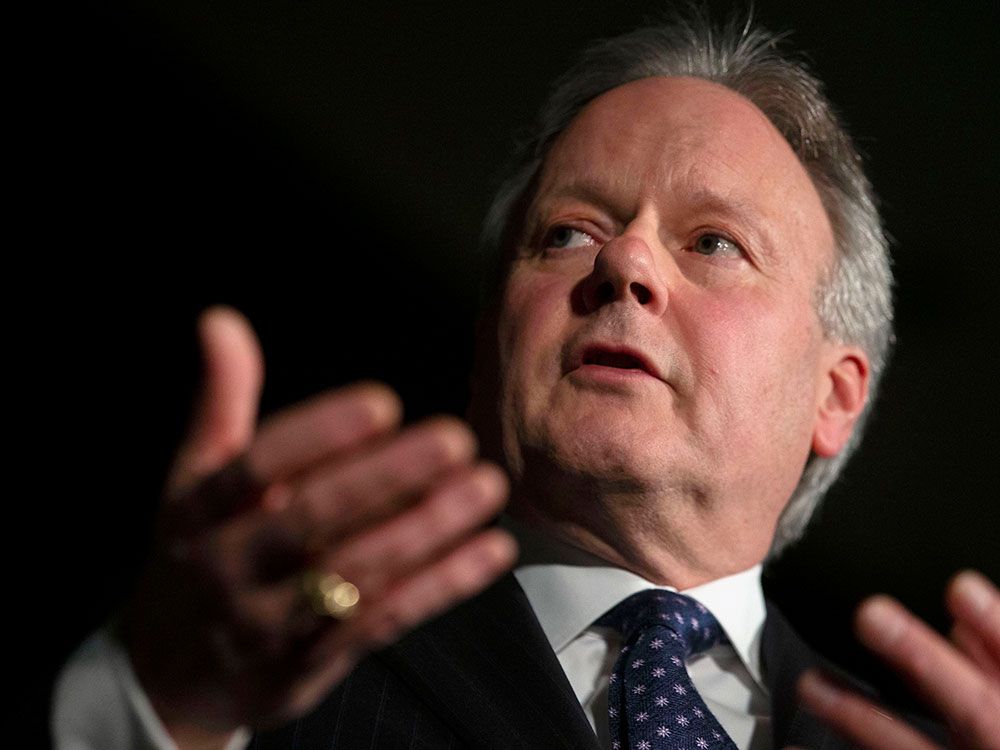Canadians should brace for recession because odds are ‘not zero,’ says Stephen Poloz

Article content
Former Bank of Canada governor Stephen Poloz sees recession conditions in many parts of the Canadian economy, as growth fails to keep pace with an increasing population.
Canada’s unemployment rate rose to 6.4 per cent in June and ticked up again to 6.6 per cent in August.
“These are close to around two percentage points above the low point,” Poloz said. “That’s a very decisive recession signal in most situations, many of our normal signals about recession are clouded because of what I mentioned earlier, which is the immigration numbers.”
Article content
Poloz, now a special adviser at Osler, Hoskin & Harcourt LLP, detailed his views of the economy during a webinar Thursday.
He noted that the population is growing at 3.5 per cent, but the economy is growing at around one per cent. This is also an indication that spending per household is shrinking significantly, something that only happens during a recession, he said.
“So that just means, if we didn’t have the population growth, it’d be growing as a minus two per cent,” he said. “Well, that is a recession.”
While the labour market’s downturn so far has been mostly a result of too many people chasing too few jobs, Poloz thinks layoffs could increase in the new year as mortgage renewals strain more households and further sap consumer spending.
“It’s probably just the beginning, because we are getting into the most stressful phase of mortgage renewal,” he said. “So, it doesn’t matter the rates are coming down, you still have to renew higher from where you were, and that just means more people join that group of constrained spending until we get through this thing.”
Preliminary estimates of July gross domestic product by Statistics Canada were flat and economists are predicting annualized growth of just 0.5 per cent for the third quarter, well below the Bank of Canada’s forecast of 2.8 per cent.
Article content
“This year is kind of a turning point, and so there’s always a lot of uncertainty around forecast,” Poloz said. “We’ve looked at the Bank of Canada’s report in July; they’re looking for actually a pretty strong second half of this year; it’s not turning out that way.”
Canada’s low productivity relative to our U.S. counterparts remains an economic sore point. Labour productivity declined for the first two quarters of this year and GDP per capita, which considers population, declined for five consecutive quarters.
Recommended from Editorial
Poloz highlighted how the American and Canadian governments are good at propping up their respective economies, but while the U.S. has spent money through the Inflation Reduction Act, which has gone to companies to build economic capacity, Canada’s fiscal spending has focused primarily on supporting the Canadian consumer.
“You see the differences are emerging in almost the way your textbook would predict, given the way we’re doing things, and what that does, it makes this idea of a soft landing much more likely in the United States than for Canada,” Poloz said.
Poloz says he does not make forecasts, but that businesses and consumers should prepare for a recession as “odds of one are not zero.”
• Email: jgowling@postmedia.com
Bookmark our website and support our journalism: Don’t miss the business news you need to know — add financialpost.com to your bookmarks and sign up for our newsletters here.
Share this article in your social network







